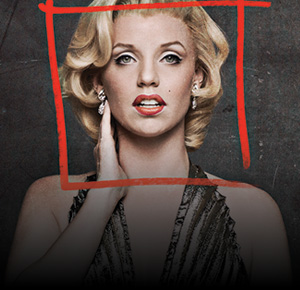Do you remember Race?
It came out in February of this year and it was kind of a big deal for a week. I think everyone was expecting it to be a big hit, just because there’s never much competition in February. Race is a biopic of Jesse Owens, the African-American runner who sets world records and won gold medals at the 1936 Berlin Olympics, defeating a legion of Aryan athletes while Adolf Hitler watched from the stands. Not only is that a compelling story but 2016 was also an Olympic year. Eddie The Eagle had already been a success due to the Olympic connection. Add to that, Focus Features promoted the Hell out of this film. In they weeks leading up to its release, I saw commercials for it on a nearly hourly basis. The reviews, when the came, were mixed but generally positive.
I’m not really sure how Race did at the box office. According to Wikipedia, on its opening weekend, it was sixth at the box office. Apparently, the film only had a budget of five million and ultimately made a profit of $20,000,0000. I guess that would make it a success. All I know is that it seems like, for all the hype, Race just kind of came and went.
In fact, I didn’t see Race until about two months ago. It’s one of those films that’s not really great but it’s certainly not bad. It’s pretty much the epitome of being adequate. It was well-made and generally well-acted. Director Stephen Hopkins occasionally struggled to maintain a consistent pace (Race is over 2 hours long and feels longer) but he still did a good job filming the scenes of Owens of running and competing. In the role of Jesse Owens, Stephan James was well-cast. You not only believed him in the dramatic scenes but he was also believable as a record-setting athlete. He had some great scenes with Jason Sudekis, who was surprisingly believable in the role of Jesse’s coach.
With all that in mind, why didn’t Race make more of an impression? I think that, too often, Hopkins allowed the film’s focus to wander away from Jesse and the inner conflict he felt as he won medals for a country where he was treated like a second-class citizen. There were too many random scenes of Jeremy Irons and William Hurt, playing Olympic officials and debating whether or not to boycott Hitler’s Olympics. During the second half of the film, Leni Riefenstahl (Carice van Houten) showed up and we got a few scenes of her trying to film Jesse’s triumph at the Olympics despite the interference of Nazi propaganda minister, Joseph Goebbles (Barnaby Metschurat). All of these extra scenes are supposed to set Jesse’s struggle in a historic context but they’re unnecessary and distracting. All the context that the film needs can be found in the fact that Jesse was a black man living in America in the 1930s.
For the most part, Race is uneven but occasionally the film delivers a powerful scene or two. One of the most powerful parts of the film comes when Jesse, after setting world records and being proclaimed as a hero across the world, is informed that he still can’t enter a New York club through the front door. As well, the scenes depicting Jesse’s friendship with German jump Luz Long (David Kross) are poignant. In fact, they’re so poignant that I initially assumed that they were fictionalized for the film but actually, Jesse and Luz Long did become good friends during the 1936 Olympics.
Race is uneven but it’s not bad. Stephan James gives a good performance as Jesse and, if nothing else, the film provides a worthy history lesson.

